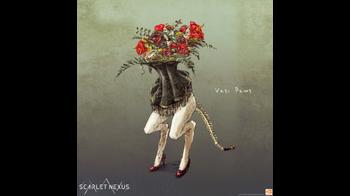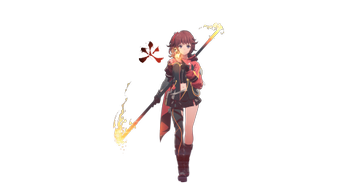Scarlet Nexus Hands-off Preview: An Urban, Brain Punk Action RPG
Announced this past May during the Xbox 20/20 event, Scarlet Nexus is a new anime-styled action RPG from Bandai Namco Studios, set to release for both current and next-generation consoles.
RPG Site had a chance to watch a virtual closed-doors keynote address for the upcoming RPG, as well as check out some gameplay footage. The keynote and gameplay are not live for public viewing, but I can describe what was discussed and what was shown regarding this new IP.
The keynote address that I saw featured three primary figures behind the game's development: producer Keita Iizuka - who had recently the same position for Code Vein, director Kenji Anabuki - who has previously worked on Tales of series games, and art director Kouta Ochiai - who has previously worked on a variety of projects, such as some Super Smash Bros games and the IdolM@ster series.
After checking out the keynote, I had a chance to ask some questions to Keita Iizuka and Kenji Anabuki. Be sure to check out my conversation with them to learn more about Scarlet Nexus.
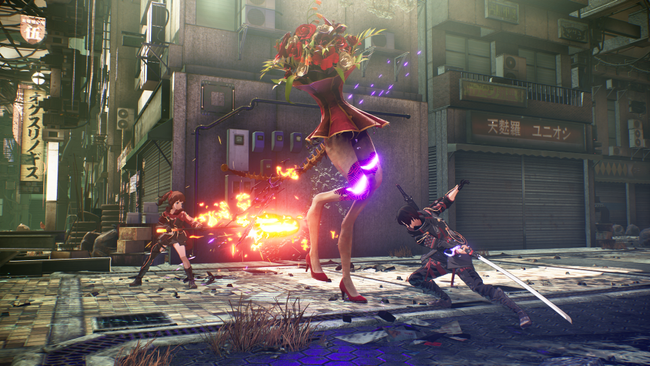
Keynote Presentation
Origins, World, and Aesthetic
The Keynote started out with the three leads talking about Scarlet Nexus' origins, which was officially proposed within Bandai Namco Studios about 4 or 5 years ago. The words 'Scarlet Nexus' invoke the color red as well as a theme of 'connection'. Throughout the game's aesthetic, a common visual component is that of 'objects connected with red lines'. In the debut trailer for the game, we see protagonist Yuito Sumeragi as a new recruit to the Others Suppression Force (OSF), a squad of superpowered soldiers tasked in protecting the citizenry from the Other invaders. In this trailer, we also see Yuito impaled in the back with a handful of red plug like apparatuses, which is literally 'plugging' Yuito into the linked system which connects cadets' brains to one another.
Scarlet Nexus is self-labeled as a 'Brain Punk Action RPG', where the power of the brain at the center of all expressions. The 'Brain' part is a large focus of the game's themes and setting, where people gain superpowers stemming from enhanced brains. The 'Punk' aspect stems from the core idea towards rebellion towards society or somehow acting as a minority against the larger forces in control. Throughout the keynote, the world of Scarlet Nexus was described a bit as an alternate advanced 1990s, though a specific time period is not actually set.
Scarlet Nexus' primary setting is called New Himuka - an absolutely huge country where the concept of 'overseas' doesn't really exist. Some of the large cities within this nation are known as Suoh and Seiran, and there seems to be an opposition country known as Togetsu, though it was not described thoroughly.
The creative vision for New Himuka was to make a 'strange but familiar world' with an advanced society markedly different from our real, existing one. In New Himuka, brains come into play in much of the world's socio-economic components, and the setting was described as sort of an 'ultimate version of Internet of Things'. A service network known as Psynet runs ubiquitously throughout this country, acting as a connected hub for infrastructure, medical, & other information. Every brain in the country is connected to Psynet, and brains come into play in other ways in this society too. For example, common devices found within this world uses people's brains to operate, not voices or touch.

Yuito Sumeragi and Story Premises
The keynote then moved on from talking about the world to talking about the game's protagonist, Yuito Sumeragi, as well as a general premise to the storyline.
At the onset of the game, we see Yuito joining the OSF force as a new cadet. Early on, Yuito holds the OSF in high regard as a sort of heroic force, as he was saved by the OSF as a child. Due to this experience, Yuito has always wanted to join the force himself, ever since childhood. However, after joining he soon starts to be suspicious if the OSF is really acting for just reasons. In the OSF, your brain is connected to all other team members at every moment, and Yuito begins to wonder if is this a good thing. There are definite advantages to this connection in the game world, as connected OSF members can borrow one another's brain powers for use in combat. There are some lingering questions that start to pop up, however. The keynote posed the question by relating it to something most of us are familiar with: 'Is being on social media always, a good thing?' The speakers casually describe this is a bit of an antithesis for the game.
"Even if we connect our brains, are we really not alone? In a society where everyone's brains are forcibly connected, what is real loneliness?" This is supposedly not the main theme of the game, but players might encounter these sorts of questions. What does it mean to be alone, what does it mean to be connected? In any case, Yuito's story will be told based on his bonds with his companions and memories of the past.
Each member of the OSF has a 'brainpower' unique to them. Yuito wields psychokinesis - the ability to move objects with his mind - and he is also adept at swordplay. Yuito is part of a prestigious family in New Himuka, as his ancestor Yakumo Sumeragi was one of New Himuka's founders around 2000 years ago. Because of his family name, Yuito was fully expected to enter politics, but his childhood experience leads him with a desire to break away from the family norm and join the OSF instead.
In terms of Scarlet Nexus' character design, Kouta Ochiai stated "one of the difficult parts is that many JRPG players would like to fight flamboyantly and look cool". But he also stated a desire to keep things at least a little bit believable, and he wanted basic things to look somewhat standard and simple. So he decided to have much of his character designs incorporate things like cables or a hood, which he stated looks cool and different enough, but not too entirely displaced from reality. In fact, Yuito's design was generally made to look relatively ordinary, and his character will mostly come through his emotions and personality.
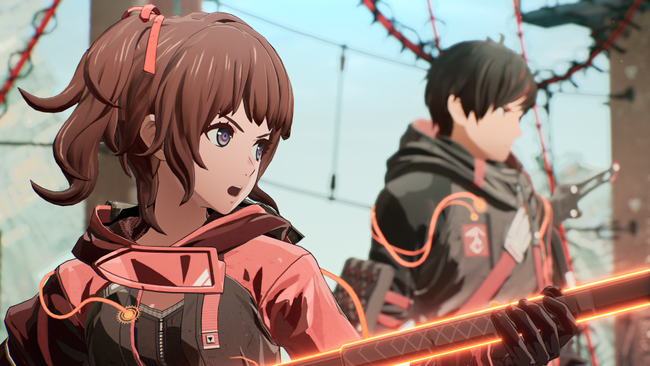
The Others
The keynote moved on to talk about the strange creatures that also appeared in the game's debut trailer - mysterious beings known as the Others.
The Others are mysterious beings that rain from the foggy sky - dubbed the Extinction Belt - that hunt for human brains. By all indication, these beings do not have any intelligence, and instead, act as monstrous threats to humanity. Others said to be are fearful and somehow portray and sad and sorrowful feel, but they are still dangerous if left unchecked. Oddly enough, the presence of Others has been around in New Himuka for long enough that people treat them as normal occurrences now. The appearance of an Other is compared to a natural disaster like an earthquake: potentially dangerous, but something people have generally gotten used to as a sort of regular happening.
Humans have come up with measures to fight them through the OSF, and the appearance of Other are even forecast on the daily news like the weather. In fact, people seemingly actually rarely die from Others, and instead, have managed to co-exist with them despite everything. They are a complete mystery as to their origin, but most people live in normalcy.
One of the most interesting parts of the keynote was how art director Kouta Ochiai described coming up with the design for these creatures.
Above all else, he wanted Others to feel "Foreign". Something uncanny, incredibly strange, or just 'off'. What Ochiai ultimately decided to do was to contract an independent artist who was otherwise not involved in the game's creation.
The idea here was that the Others feel very out of place in the world of New Himuka. To really emphasize that 'foreign' element for the Others, Bandai Namco wanted their creation to also be largely divorced from the rest of the game's development, so they hired someone from outside Bandai Namco to provide these unnatural creatures.
The creature designer that they landed on was an artist named Masakazu Yamashiro, who has never worked in games before. You can check out his portfolio website here, where he also goes by the handle 'pikioon'. Taking a look at his profile, you can get an idea of the sort of designs they had in mind when contacting him, as his works have a strange, unnatural, but weirdly beautiful vibe.
The only stipulation Bandai Namco and Ochiai made for the design of the Others is that they have a mix of organic and inanimate objects, such as flowers paired with bricks. This juxtaposition supposedly relates to their mystery - combining two elements that otherwise repel visually. The Others are incomprehensible creatures, which matched the design style seen in Yamashiro's works. Ochiai needed to get permission from Bandai Namco to bring Yamashiro on board, and while Iizuka was somewhat skeptical at first, he really liked what he saw when the first designs were made.
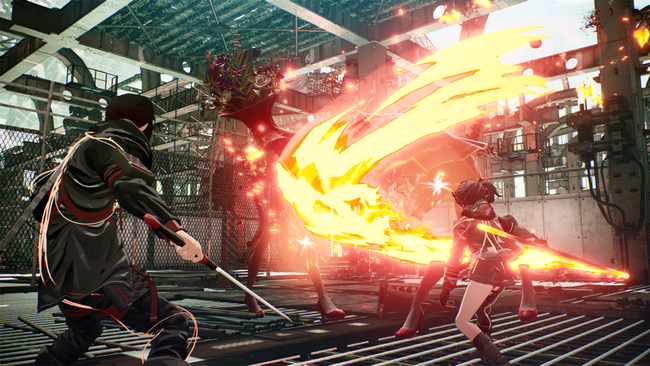
Performance Targets
In ending the Keynote section of the presentation, Bandai Namco briefly described the performance targets expected for Scarlet Nexus. On PlayStation 4 and Xbox One, the team is aiming for "Full HD" (presumably meaning 1080p) and 30 frames-per-second. On PlayStation 5 and Xbox Series X, the development is aiming for 4K resolution and 60 frames-per-second. The PC version will support numerous resolution and framerate options.
Hands-off Gameplay Demo
At this point, I was shown several minutes of uncommented combat gameplay for Scarlet Nexus. This gameplay showed many components to be found in the Action RPG, but since many of the provided public assets don't highlight these features clearly, I'll try to describe what I saw.
The first gameplay clip seems to start shortly after the scene depicted in the game's debut trailer, where Yuito has been initiated into the OSF as a new cadet. He first has to pass a trial of sorts to prove his capability and his combat prowess with his psychokinesis powers.
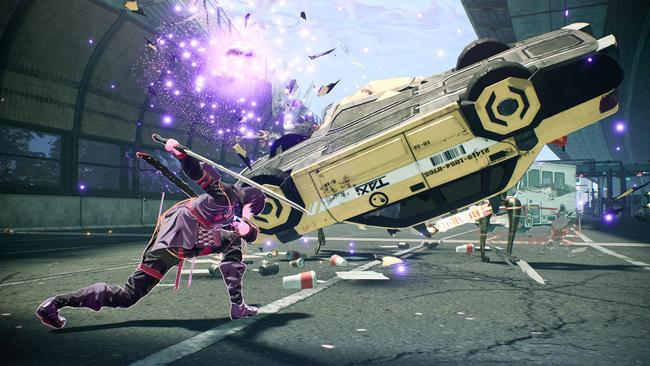
Scarlet Nexus is an action RPG, and Yuito attacks Others on the field in real-time. The key component that seems to make Scarlet Nexus unique is how Yuito can use his psychokinesis to interact with the environment around him during combat. By holding one of the triggers and seemingly flicking an analog stick, you can fling various environment items on the field towards your target. In fact, many combat skills the game seems to expect the player to mix up attacking with Yuito's swordplay and his PK powers. Combos involve slashing a few times with your sword, throwing an item, following that up with more slashes, and so on.
Occasionally when flinging items with Yuito's PK ability, the game will momentarily switch to a more cinematic gameplay angle, where the player then performs a small QTE (usually holding the sticks a certain way) to deal damage. All of these PK powers use a PK meter to perform, and this PK power can be built up during combat whenever you hit an enemy with a sword. That mechanic also seems to play into the gameplay design geared to alternate between swordplay and superpowers - getting a few hits in to raise your meter, spending a bit of it with a PK power, and repeating.
The gameplay switched to a new scene after this, which introduced a new character and a few other components to the gameplay.
The new character is a girl named Hanabi Ichijo. She also is part of the OSF and has her own brainpower ability. However, her power is not psychokinesis; it is pyrokinesis - the ability to manifest fire.
In this second gameplay clip, I saw Yuito and Hanabi running around an urban city area with open zones and connected pathways.
Various other characters of the OSF were often chiming in through a sort of headset (or perhaps through the Force's brain link), but the text and audio were fully in Japanese, so I could not gather what was actually being discussed in context. In this clip, I caught glimpses of various subsystems in place within the game's various menus, though these were not explained directly.
One of these systems is called the Brain Map, which looks to be a sort of skill tree. Unlocking nodes on the Brain Map cost BP, and the map seems to be divided into three separate sections: Enhance, Expand, and Support. Some of these nodes added passive buffs and others added various bonuses. The Brain Map nodes I saw included PK attack power-up, adding a shockwave to sword attacks, more combo attacks in mid-air, adding a rebound ability when you are launched, and an item attraction that pulls drops towards you.
Some basic RPG type information followed. Character equipment seems to be a weapon and three 'plugin' accessories. The primary character stats seem to be Power, Attack, and Defense. Allies have a 'Tactics' setting to control their behavior, such as 'battle at will'. There are levels and EXP, and the menu showed both primary quests and side quests. You seemingly can change Yuito's party members at will, though the clip shown only had Hanabi has a comrade. For what it is worth, in my interview with the key staff, they stated that Yuito is the only playable character. The other characters instead will act on their own in combat, each with their own HP pool and such. Their unique abilities can augment the player through what is known as the SAS system.
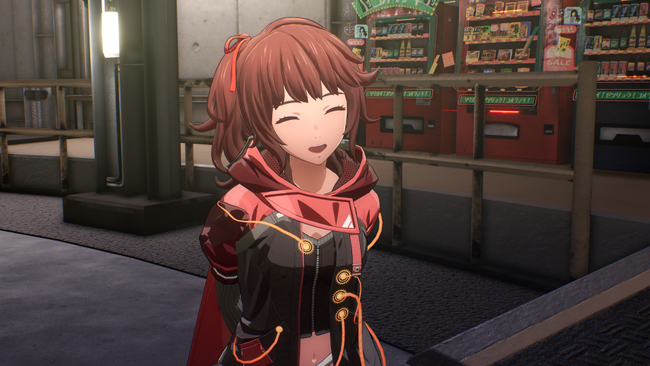
The SAS (Bond System)
The SAS (which seems to stand for Struggle Arm System) is a character bonding system where Yuito can bond with other party members, which offers bonuses in gameplay.
I saw the SAS system regarding Hanabi. By forming a bond with her, using the SAS, Yuito can begin to incorporate her pyrokinesis into his own attacks. Based on what I saw (to be clear, this was not narrated to me directly, just what I could tell from the gameplay), it seems four bonds in the SAS can be set at any one time, attached to the face buttons. These SAS bonds have an activation time and a cooldown time. For example, when the Pyrokinesis (Hanabi's) SAS icon is ready, you can activate it, which will add fire to Yuito's attacks for a limited time. While active, he even seems to gain new abilities in his attack combos, such as creating a firey tornado. The SAS activation only lasts for a limited time, though, and after it runs out, you must wait for a cooldown period before it can be activated again in combat.
This bond with other characters can be leveled up over time, and the abilities attached to that bond will power up as the bond is strengthened. Hanabi's SAS bond showed the following set of improvements at various levels.
- Fire Infusion (Weapon)
- Fire Infusion (PK), Skill Change
- Cooldown reduction
- SAS Hologram (Pyrokinesis)
- Effect Extension
- Skill Change (Flamethrower)
The menu also showed a type of quest called 'Bond Episode', which I assume are character-specific quests that unlock as the bond between said character and Yuito is strengthened. While the gameplay I saw did not specifically show how these bonds are powered up, it presumably can be done by participating with that character and combat, and perhaps through other means not yet shown.
The gameplay clip ended with a boss fight in the city where Yuito and Hanabi faced off against a large beast-like Other. Hanabi acts on her own, but she does have her health bar, so you'll need to make sure she's not taking too many hits.
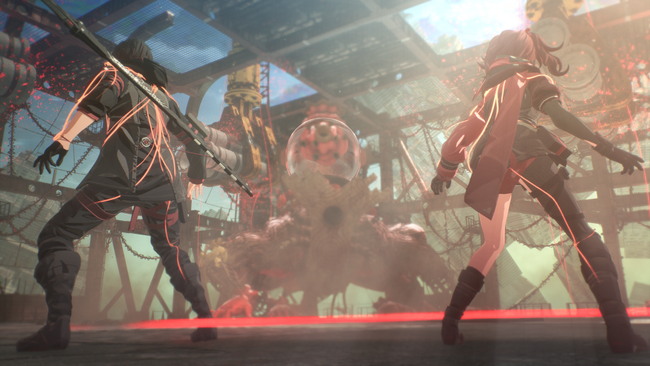
Combat against the boss seemed to be what you would expect in any good action RPG. It had certain patterns and attacks, which the player needs to learn how to avoid or counter. Yuito had to find the place openings to land hits, which could seem to knock the other off-balance in other to land a high amount of damage in a short amount of time. As seen throughout the gameplay clip, the key to combat seems to be knowing how to coordinate Yuito's swordplay, psychokinesis, and Hanabi's pyrokinesis through SAS.
Finally, the clip showed a quick glimpse of a settings menu. This is likely not set in stone as the game in development, but there were options for anti-aliasing, Vsync, texture quality, shadow, post-processing, resolution, screen/window, framerate (30/60/not fixed). Other non-performance related game options included mini-map display/rotation, auto-scroll dialogue, volume sliders, camera sensitivity/inverse, enemy damage display, and a difficulty setting (easy/normal/hard).
There's no still indication when Scarlet Nexus will release, but now I have a much better idea of what to expect when it launches. For further reading, be sure to check out our interview with Keita Iizuka & Kenji Anabuki.
